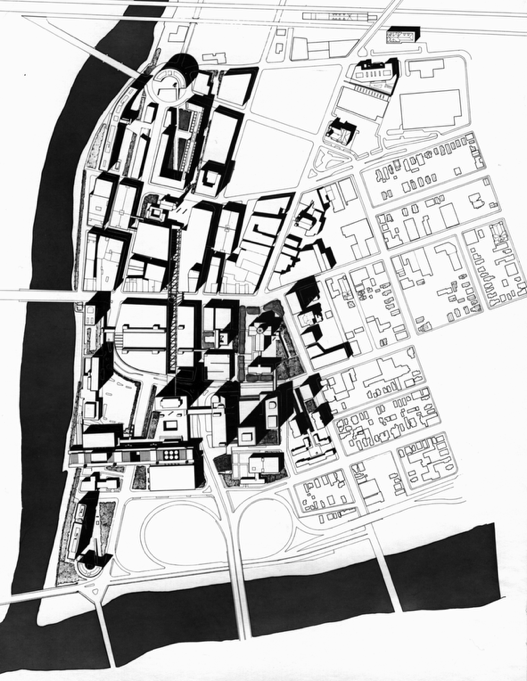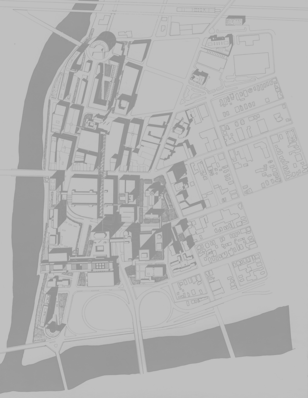Binghamton — Urban Design
Binghamton, New York
1
Seligmann was involved with the urban design of Binghamton, New York, since 1967, first, when he was commissioned to manage a design competition for a new cultural center for Broome County. Then, after the competition, by developing a new master plan for the redevelopment of the downtown area, defined by the Susquehanna and Chenango Rivers.
Although the master plan remains mostly unfulfilled, Seligmann focused on the redesign of several areas featuring important civic architecture, notably Christ Episcopal Church, Old City Hall, and the Broome County Courthouse.
The most prominent, and publicly beneficial, change to the city was the development of a riverfront promenade, inspired by the promenade along the Charles River in Cambridge, at MIT.
Seligmann devoted an entire school year at Cornell having students develop various sectors of the city, including residential neighborhoods, and on a more practical level, they designed bus shelters, street furniture and graphics that would be used in the promotion of an enhanced public transit system.
Binghamton, like Buffalo (and Boston), has multiple street grid patterns—determined by their respective waterfronts—that collide in the downtown area, making for a real jumble, or a real opportunity, if handled well. Seligmann perceived these collisions as an opportunity to create a dense urban fabric, similar to Boston or other European-style cities.
In 1968, the urban design studio, led by Colin Rowe, took on the redevelopment of Buffalo as a large class project, described further in this book. First attempts seemed to lack a purpose. When Seligmann shared his development of the master plan, to the right, with its various overlays, it re-invigorated the development of the, now famous, Buffalo Plan, which was exhibited at the Albright Knox Gallery during 1969. (See page ??)
1967 — onwards

This is the first master plan, showing development of the Chenango River waterfront and still showing the competition winning design of the cultural center and arena by ELS.
Chenango River
Susquehanna River
Improvements were made to better define the grounds of the historic church and courthouse. A brilliant design to connect the church via a Milano Galleria, sadly, was not implemented.
1 Clinton Street Bridge
2 Christ Episcopal Church
3 Court Street Bridge
4 Galleria
5 Riverfont promenade
6 Treadway Inn
7 Old City Hall
8 Broome County Courthouse
9 Cultural center and arena

1
2
3
4
7
8
5
5
9
6